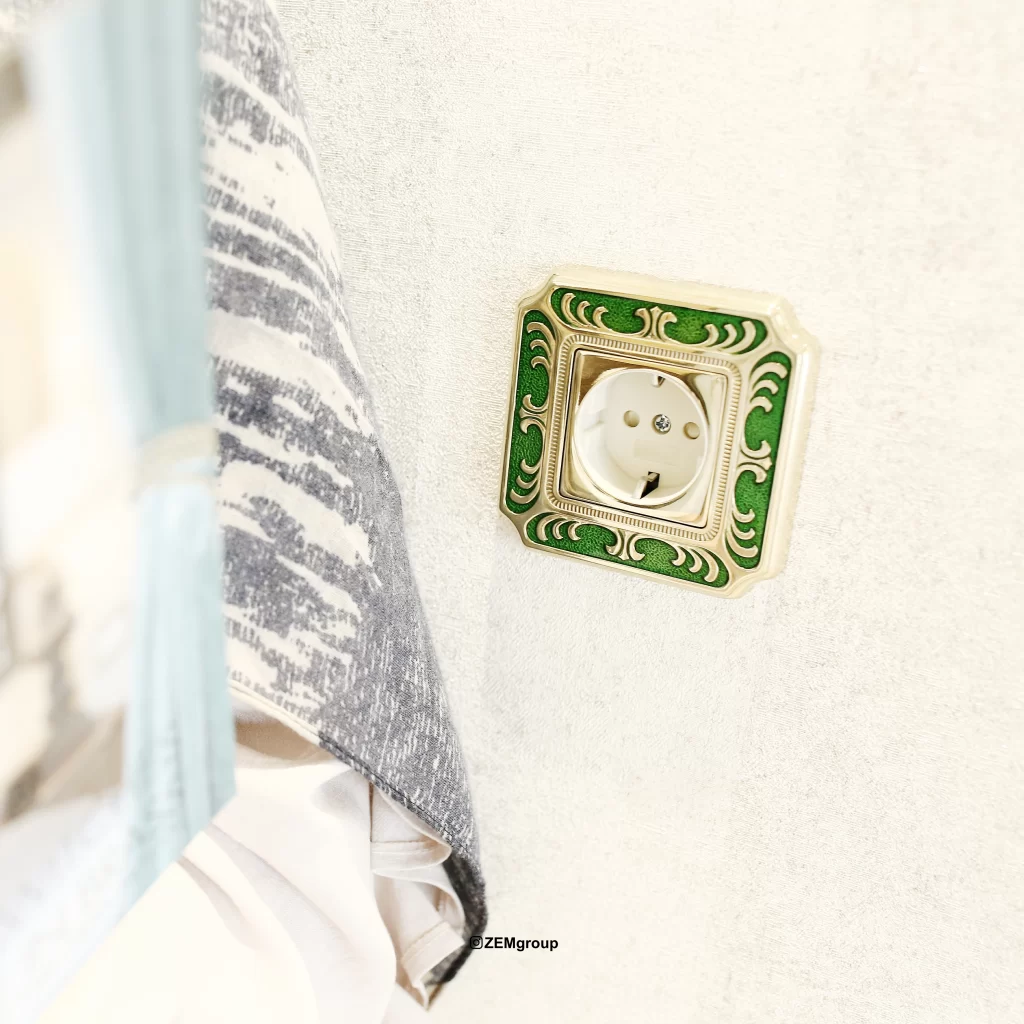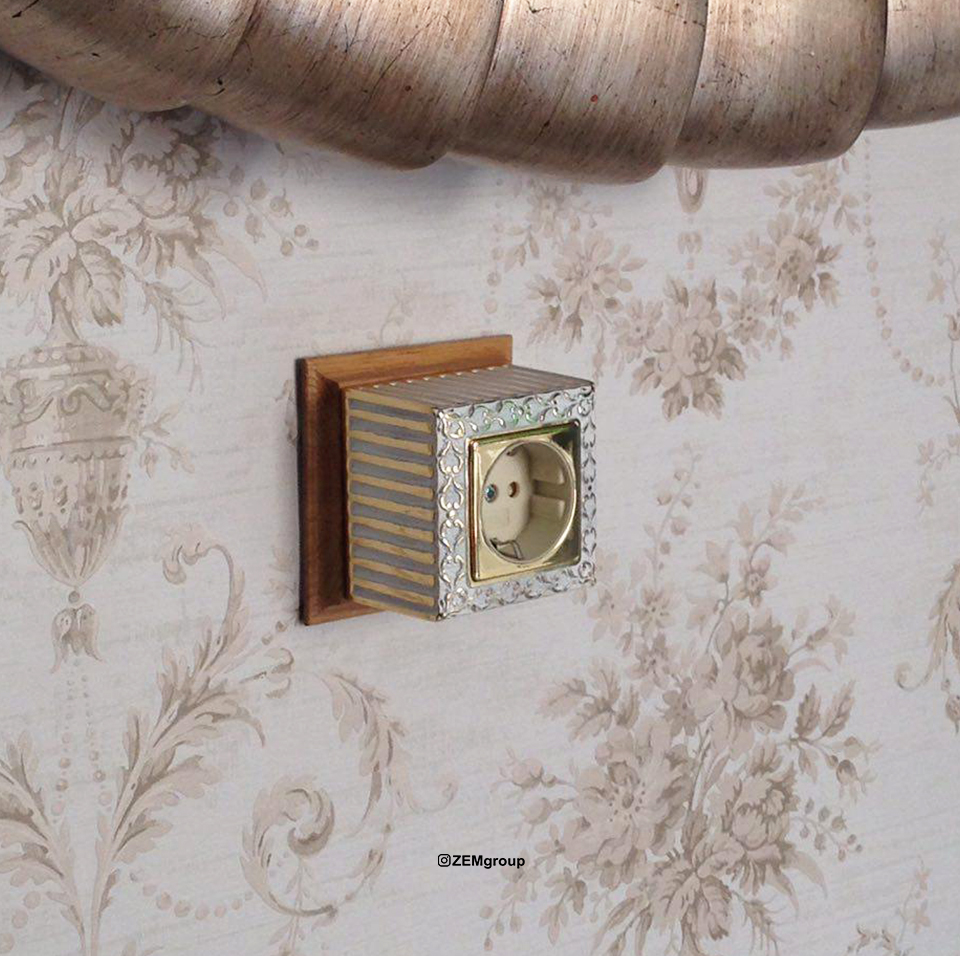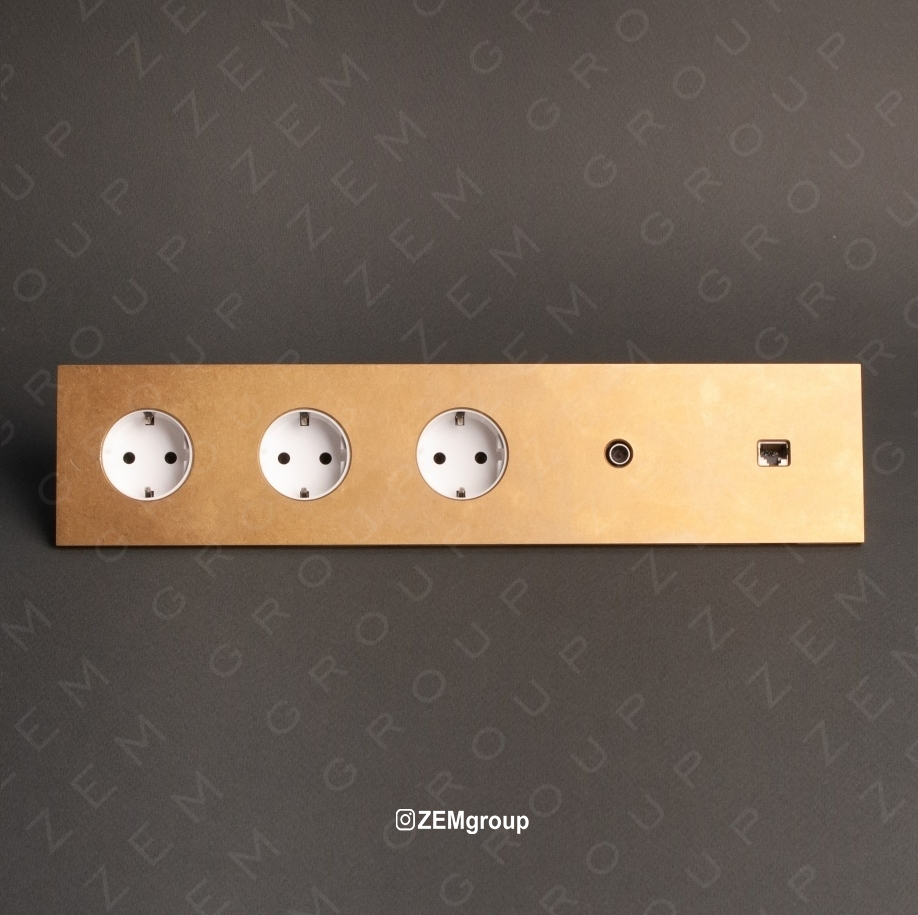Understanding IP Ratings in Switches and Sockets: Why Waterproof Standards Matter
[ez-toc]
In today’s world, where interior design is intertwined with technical functionality, choosing the right switches and sockets goes beyond just aesthetic appeal. One of the most important factors to consider when purchasing is the IP rating or Ingress Protection rating. This standard indicates how resistant a switch or socket is to the intrusion of water and dust. Its importance becomes even more evident in areas such as bathrooms, kitchens, or outdoor spaces, where moisture and water exposure can be harmful. In this article, we’ll explore what the IP rating truly means and why choosing waterproof and environment-resistant switches and sockets plays a vital role in the safety and longevity of your home’s electrical system.
What is the IP Rating and How is it Defined in Switches and Sockets?
The IP standard, short for Ingress Protection, is an international code that indicates the level of protection a device has against the intrusion of solid objects (like dust) and liquids (like water). This standard applies to many electrical devices, including switches and sockets, and helps users understand the environmental limits in which the device remains safe and functional.
How is the IP Code Structured?
The IP code usually consists of two digits, such as IP44 or IP67:
-
The first digit represents protection against solid objects and dust (ranging from 0 to 6).
-
The second digit indicates resistance to water (ranging from 0 to 8).
Examples:
-
IP20: Protection against relatively large objects like fingers but no protection against water.
-
IP44: Protection against small tools and splashing water.
-
IP67: Completely dust-tight and resistant to temporary immersion in water.
The Importance of This Standard in Switches and Sockets
In environments where moisture or dust exposure is high, using switches and sockets with the appropriate IP rating increases safety, enhances product lifespan, and helps prevent electrical hazards. Especially in bathrooms, kitchens, terraces, outdoor areas, or industrial settings, adhering to this standard is essential.
In the next sections, we’ll examine which IP ratings are suitable for different areas of the house and what factors to consider when making a purchase.

Why is Waterproofing Essential in Certain Areas?
Waterproof switches and sockets are not just a luxury or secondary feature—they are a modern safety requirement in electrical installations. In areas prone to moisture or water splashes, using products without a suitable IP rating can pose serious risks such as short circuits, electric shocks, or even fires.
Areas that Require Waterproof Switches and Sockets:
-
Bathrooms and Toilets
Constant exposure to steam and humidity makes it essential to use switches and sockets with at least an IP44 rating to prevent moisture from entering the internal components. -
Kitchens
Near sinks or stovetops, splashing water and oil are common. A standard switch or socket can quickly become damaged in such an environment, whereas waterproof models with proper sealing offer greater durability and safety. -
Outdoor Spaces Like Terraces, Yards, or Villas
Rain, dust, and even insects can penetrate electrical equipment in outdoor areas. IP65 or higher is recommended for these locations to ensure safe and long-lasting operation. -
Industrial or Semi-Industrial Settings
Workshops, warehouses, or environments with chemicals and pollutants require high electrical safety. In these settings, waterproof and dust-resistant equipment is absolutely necessary.
Differences Between Standard and High-IP Switches and Sockets
Standard switches and sockets differ significantly from high-IP models in terms of structure, performance, and application. Understanding these differences helps you make a more informed purchasing decision.
-
Resistance to Dust and Water
Standard models usually lack sufficient protection against dust and water and are designed for dry environments. In contrast, high-IP switches and sockets (like IP44, IP65, or IP67) feature precise sealing and protective casings that prevent the intrusion of moisture, splashes, and dust particles. -
Material and Build Quality
Standard switches are often made of basic plastic materials with limited environmental resistance. High-IP models are typically built with high-density plastics, special resins, or even stainless steel, making them much more durable in harsh conditions. -
Protective Design Features
IP-rated switches and sockets are engineered with enhanced protection in mind. They often include rubber gaskets, protective covers, or locking mechanisms to keep out water and dust. Standard models usually lack these features and are better suited for dry indoor installations. -
Price and Application
Due to advanced materials and sealing technologies, high-IP models are generally more expensive. However, this additional cost is justified in moist or hazardous areas, as it reduces the risk of damage and extends the life of the device. Standard switches are more suitable for dry spaces like bedrooms, living rooms, or office environments.

How to Choose the Right IP-Rated Switch or Socket?
Selecting the right switch or socket with an appropriate IP rating is a crucial step in designing and implementing an electrical system. It directly affects the safety, durability, and user convenience of the installation. To choose the best product, various factors must be taken into account:
-
Assess the Installation Environment
Begin by evaluating the exact location. Dry indoor areas like bedrooms and living rooms generally require switches with lower IP ratings. However, for moist, dusty, or outdoor areas—such as bathrooms, kitchens, or terraces—you need products with a higher IP rating. -
Understand IP Ratings and Their Use Cases
Familiarity with IP ratings helps determine the necessary level of protection. Generally:-
IP20: Suitable for completely dry, indoor environments.
-
IP44: Ideal for semi-moist areas like kitchens and bathrooms.
-
IP65 and above: Recommended for outdoor, industrial, or harsh environments.
-
-
Consider Product Features
Besides the IP rating, pay attention to the material, surface finish, sealing system, and mechanical resistance. Products such as SOHO model switches with a modern design and suitable IP rating are good options for indoor and semi-moist spaces. Additionally, wooden or ceramic switches with proper protective standards offer both aesthetic appeal and functional reliability in specialty settings. -
Consult Experts and Check Certifications
When in doubt or dealing with specific environments, consult electrical professionals or reputable vendors to ensure the product meets all safety and performance standards. -
Test and Inspect After Installation
After purchasing and installing the product, ensure it functions correctly. In case of any leakage, malfunction, or visible damage, act promptly for repair or replacement.
Frequently Asked Questions (FAQs)
1. What does the IP rating on a switch or socket mean?
The IP (Ingress Protection) rating indicates a device’s resistance to dust and water intrusion. It consists of two digits: the first represents protection against solid particles, and the second indicates protection against liquids.
2. Why is using waterproof switches and sockets important in certain areas?
In areas like bathrooms, kitchens, or outdoor spaces where water and moisture are prevalent, waterproof switches and sockets with a high IP rating help prevent equipment failure and reduce the risk of electric shocks.
3. What IP rating is suitable for bathrooms or kitchens?
Typically, IP44 or higher is recommended for humid indoor spaces, as it prevents the intrusion of water splashes and steam, ensuring necessary safety.
4. Are high-IP switches and sockets more expensive? Are they worth it?
Yes, these models are more expensive due to their advanced materials and sealing features. However, the added cost is justified as it improves safety, durability, and helps prevent costly damages over time.

Leave a Reply